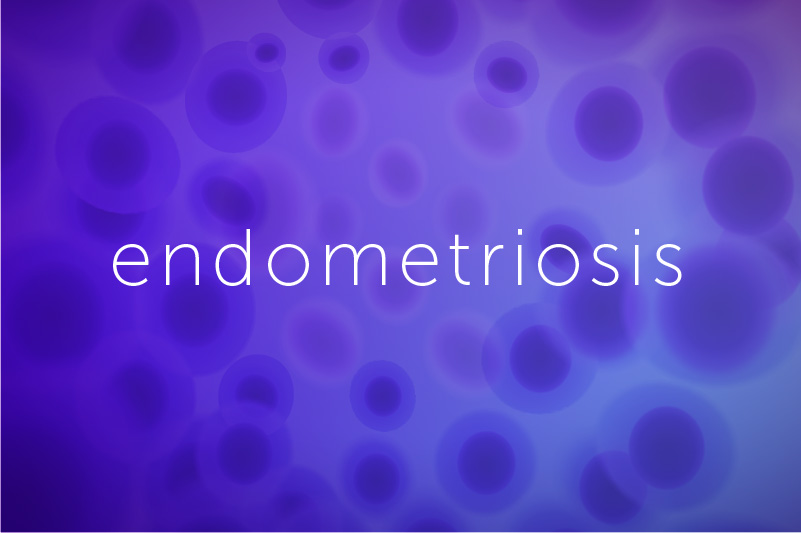Explaining endometriosis: What parents and teens should know

People with uteruses know that menstruation can bring cramps, general discomfort, mood swings, and other symptoms each month. But, just how much discomfort and pain is normal during your period? For more insights on severe period pain — and endometriosis in particular — we spoke with Dr. Jessica Shim in the Division of Gynecology and Center for Congenital Anomalies of the Reproductive Tract at Boston Children’s.
What is endometriosis?
Endometriosis is a chronic inflammatory condition that affects 5.5 million people in North America. It occurs when the tissue that lines the uterus (the endometrium) grows outside of the uterus. These cells can grow in abnormal locations like the ovaries, intestines, bladder, and more. It’s one of the most common causes of painful periods and abdominal pain that folks with uteruses might experience.
The tissue that grows outside of the uterus can still function as it would if it was still inside the uterus. Each month, these cells thicken, break down, and bleed. “When this happens, the blood has nowhere to go, so it can stay trapped in the body.” explains Shim, “Some lesions may secrete inflammatory chemicals.”
How can you recognize the symptoms?
Symptoms vary from person to person and are often inconsistent. Endometriosis pain could be mild or severe depending on the individual. Some may experience no symptoms at all, and others might have worsening symptoms over time. It’s important for parents to know and be able to recognize these common symptoms:
- painful periods (dysmenorrhea)
- chronic pelvic pain, even when not menstruating
- excessive bleeding during or between periods
- diarrhea, constipation, and other urinary symptoms during the time of their periods
- lower back and abdominal pain
What are the treatment options?
There are a few available treatment options for people who are living with endometriosis. They are:
Hormonal: Hormonal treatments like birth control pills can often bring relief from severe symptoms. There are two categories of birth control pills: estrogen and progestin pills or progestin-only pills. When deciding which treatment is right for your teen, their healthcare provider will consider your family’s medical history, such as whether you or anyone in your family has a history of blood clots or migraines. It’s important to talk with your teen’s provider about what option is best for them.
Aside from birth control pills, there are other hormonal options. Medroxyprogesterone (Depo-Provera) is an injectable contraceptive that stops menstruation, therefore stopping the pain associated with endometriosis. Long-acting reversible contraceptive methods such as the etonogestrel arm implant (Nexplanon) and the hormonal intrauterine device may also improve some of the endometriosis-associated symptoms.
Surgical: The only way to definitively prove endometriosis is through laparoscopy, an invasive surgery. During a laparoscopy, the excess tissue is removed. This can relieve the pain temporarily, but symptoms may return over time.
Often, providers will refer your teen to a physician in another specialty to treat their symptoms. This could mean seeing a pain specialist if the symptoms are severe period or pelvic pain. “What’s most important is that parents and teens work with their provider to find the best treatment option,” says Shim. At Boston Children’s, physicians will refer to pain treatment services and physical therapy to help treat symptoms.
What are the long-term effects of endometriosis?
If the tissue continues to grow, it can cause scarring and may have lasting effects on future fertility.
People with infertility often also have endometriosis, but we don’t have enough data to prove cause and effect. “There is not a lot of information surrounding endometriosis,” explains Shim. “However, we know that endometriosis is common with infertility.” This is potentially due to the endometriosis progressing and damaging more tissues while undiagnosed
“We do not have significant data that has followed teenagers diagnosed with endometriosis into adulthood,” says Shim. “So the data pointing to effects on fertility may not be accurate, especially with earlier intervention in teen years.”
Things to know about endometriosis prevention
When talking about potential prevention, Dr. Shim urges parents to encourage an open dialogue about period and pelvic pain. Severe and debilitating pain is never normal for people who get periods, so it is important to listen to these concerns when your child brings them up. If you are noticing quality of life changes, like missing classes due to period pain or being unable to enjoy after-school activities, it’s time to talk to your child’s provider.
Unfortunately, endometriosis is a chronic condition, but many patients experience great outcomes with the available treatment plans. Parents and teens should check in with their provider to ask about what treatment options work best for them and to get on the road to leading a healthy and comfortable life.
Learn more about how the Division of Gynecology and the Center for Congenital Anomalies of the Reproductive Tract at Boston Children’s Hospital provide gynecologic, sexual, and reproductive care while helping patients better understand their own health and development.
Boston Children’s Primary Care Alliance providers can support you and your child through puberty. Find a pediatrician near you.
Related Posts :
-

Out of balance: How hormones can affect your child’s period
If your tween or teen is experiencing irregular periods, they aren’t alone. In the first two years after getting ...
-

Four ways to support your teen's mental health
Being a teen is hard enough, but with the current adolescent mental health crisis, parents should know about the psychosocial ...
-

Helping your child understand puberty
We all remember the changes — and awkwardness — of puberty. But helping your child navigate puberty is a whole different matter. ...
-

Talking with – not at – young people about substance use
Teens and young adults using drugs and alcohol is not new. Neither is the challenge of speaking with them about ...





